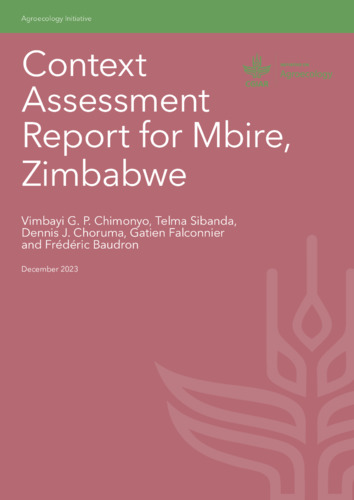Agroecological Living Landscapes: A Context Assessment in Mbire, Zimbabwe
Abstract
This report contributes to Output 2.1. Baseline – current conditions of agricultural systems of smallholder farmers in each Agroecological Living Landscape (ALL) and provides context to their current state. Therefore, the document is a Context Assessment report developed and maintained to ensure a thorough understanding of the operational context and the stakeholders and communities. This document is a living document and will continuously evolve. For Zimbabwe, the ALLs are at the district level, with two sub-ALLs at the ward level. The current Context Assessment has been reported for Mbire, which is at the district level and, where information is available, the wards where the nuclei ALLs have been established were given. We used gray literature from published articles, reports, and web pages as the main source of information. This information was validated with data collected during focus group discussions (FGDs), key informant interviews (KIIs), and meetings. The key findings show that Mbire comprises mainly family farmers characterized as resource-poor. The community is largely patriarchal, with chiefs and herdmen managing natural resources. The main production constraints include, but are not limited to, weather risks (drought and floods), low access to improved technologies, low market access, and human-wildlife conflict. Sorghum, sesame, and cotton are the main field crops produced, while farmers keep goats, cattle, pigs, and poultry. Horticultural crops are also produced along riverbanks. The main environmental hazards are soil erosion, gullies, and deforestation. The communities in Mbire have good access to diverse foods across the different food groups, most of which are sourced from the natural forests that surround the communities. However, food availability is greater from March to August and the peak lean period is experienced from September to December. Findings from KIIs and FGDs across Mbire District revealed several farmer groups and committees. Farmer groups are small and formed on their own initiative or through development agencies with specific objectives, such as strengthening food security and improving the household income of group members. Many of the groups formed are not concerned about diversity but rather contributing to the group cause.

